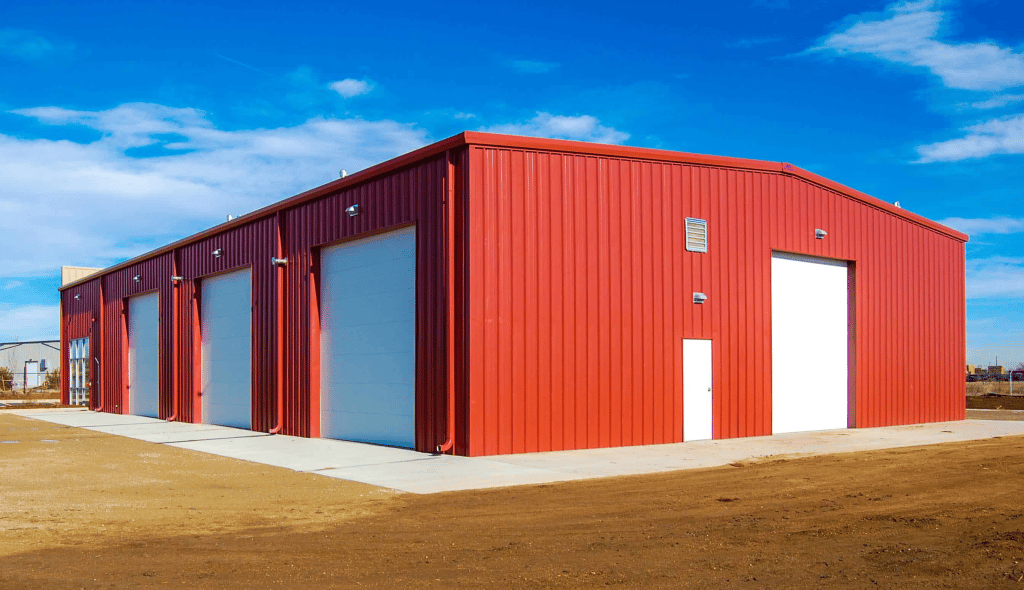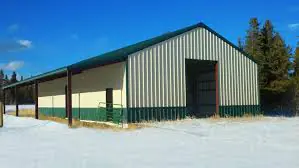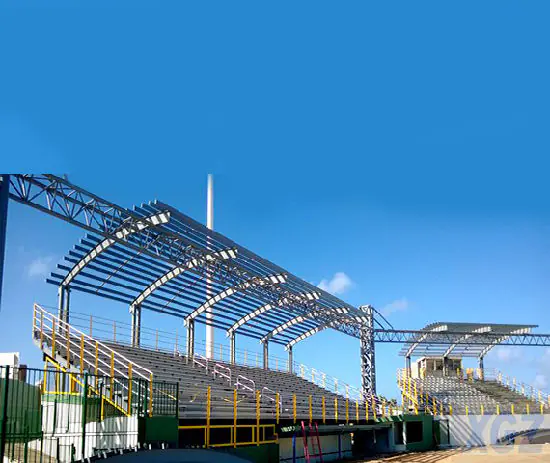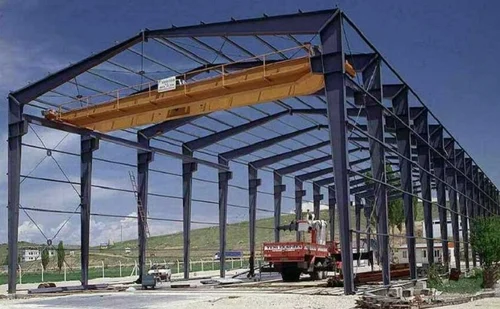Prefabricated Steel Agricultural Buildings: Modern Agribusiness Solutions
Discover the advantages of prefabricated steel agricultural buildings: durable, versatile, and cost-effective. Optimal solutions for storage and modern agribusiness operations.
Prefabricated steel agricultural buildings emerge as an innovative solution in the modern agribusiness industry. This article provides an in-depth review of the concept, benefits, and advantages of these buildings for the agricultural sector.
We will discuss various aspects ranging from durability, flexibility, cost efficiency, to ease of maintenance. Discover how prefabricated steel buildings can optimize your agricultural operations, increase productivity, and provide maximum protection for equipment and crops.
Learn why more farmers and agribusiness entrepreneurs are turning to this efficient and durable construction solution to meet their storage and operational needs.
1.What are Prefabricated Steel Agricultural Buildings?
Prefabricated steel agricultural buildings are structures specially designed for the needs of the agricultural sector, with their main components produced in a factory before being assembled at the farm site. This system uses steel as the primary material due to its high strength, durability, and flexibility, making it ideal for various agricultural applications.
The concept of prefabrication in the agricultural context involves the design, manufacture, and assembly of steel components in a controlled environment. This process ensures consistent precision and quality, crucial for meeting the demands of often challenging agricultural environments. The main components of prefabricated steel agricultural buildings include the main frame, roofing system, walls, and various accessories tailored to specific agricultural needs.
These buildings can be used for various purposes in the agricultural sector, including:
- Crop storage warehouses
- Agricultural equipment storage
- Livestock housing
- Greenhouses or plant cultivation structures
- Processing and packaging facilities
- Hangars for agricultural aircraft
The main advantage of prefabricated steel agricultural buildings lies in the speed of construction, resistance to extreme weather, and adaptability to various agricultural needs. This method allows farmers and agribusiness entrepreneurs to quickly build necessary infrastructure without disrupting ongoing agricultural operations.
In terms of design, prefabricated steel agricultural buildings can be customized to various sizes and configurations. They can be designed with wide spans without interior pillars, providing maximum space for storing large equipment or handling crops. Additionally, ventilation and lighting systems can be easily integrated to ensure an optimal environment for storing agricultural products or livestock maintenance.
The sustainability aspect is also an advantage of prefabricated steel agricultural buildings. Steel is a fully recyclable material, and efficiency in the production and construction process significantly reduces waste. This aligns with the trend of sustainable agriculture that is gaining global attention.
Economically, although the initial investment may be higher compared to traditional construction methods, long-term savings can be achieved through reduced construction time, lower maintenance costs, and a longer lifespan. These buildings can also be easily expanded or modified as agricultural operations grow, providing valuable flexibility in a dynamic industry.
Considering all these factors, prefabricated steel agricultural buildings offer a comprehensive solution to infrastructure challenges in the modern agricultural sector, combining efficiency, durability, and adaptability in an attractive package.

2.Advantages of Pre-Engineered Steel Farm Equipment Storage Buildings
Pre-engineered steel farm equipment storage buildings offer significant advantages for farmers and agribusiness entrepreneurs. Here’s a detailed explanation of their main benefits:
Durability
Pre-engineered steel buildings have exceptional resistance to various environmental conditions:
- Withstand extreme weather such as strong winds, heavy rain, and snow.
- Resistant to corrosion with galvanization treatment or anti-rust paint.
- Not easily attacked by pests such as termites or fungi, unlike wooden buildings.
- Able to withstand heavy loads from modern agricultural equipment.
Versatility
Design flexibility allows for various uses:
- Can be customized to store various types of agricultural equipment, from tractors to harvesting tools.
- Easily modified to accommodate changing needs, such as adding storage systems or work areas.
- Suitable for various functions, from storage to equipment repair workshops.
Cost-Effective
Although the initial investment may be higher, these buildings offer long-term savings:
- Reduced maintenance costs thanks to material durability.
- Better energy efficiency, reducing operational costs.
- Potential reduction in insurance premiums due to fire and natural disaster resistance.
- Higher resale value compared to conventional buildings.
Low Maintenance
Minimal maintenance requirements save time and money:
- Does not require repainting as often as wooden buildings.
- Resistant to rot and structural damage.
- Easy to clean and inspect regularly.
Clear Span Design
Ability to create large spaces without interior pillars:
- Maximizes storage space for large equipment.
- Improves efficiency in equipment movement and placement.
- Allows flexibility in interior layout arrangements.
Energy Efficiency
Design that considers energy aspects:
- Integration of effective insulation systems to control interior temperature.
- Utilization of natural lighting through skylights or transparent panels.
- Ability to integrate renewable energy systems such as solar panels.

Expansion
Ease of expansion as the business grows:
- Modular design allows for easy addition of space.
- Can be relocated or dismantled and rebuilt if necessary.
- Flexibility to accommodate new equipment or evolving agricultural technologies.
Fire Resistance
Better safety against fire risks:
- Steel is not easily flammable, reducing the risk of fire spread.
- Meets strict fire safety standards.
- Potential to lower fire insurance costs.
Longevity
Long-term investment with an extended lifespan:
- Many steel buildings last over 50 years with minimal maintenance.
- Resistance to material degradation ensures long-term performance.
- Maintains value and functionality for years.
Speed of Construction and Installation
Short construction time provides operational advantages:
- Prefabricated components reduce on-site construction time.
- Minimizes disruption to ongoing agricultural operations.
- Allows farmers to quickly utilize new facilities.
Considering all these advantages, pre-engineered steel farm equipment storage buildings offer a comprehensive and efficient solution for modern agricultural infrastructure needs. The combination of durability, flexibility, and cost efficiency makes them an increasingly popular choice among forward-thinking farmers and agribusiness entrepreneurs.

3. Conclusion
Prefabricated steel agricultural buildings have proven themselves as a superior infrastructure solution for the modern agribusiness sector. Their advantages in terms of durability, flexibility, cost efficiency, and ease of maintenance make them an increasingly popular choice among farmers and agricultural entrepreneurs.
The ability of these buildings to adapt to various agricultural needs, from equipment storage to processing facilities, provides significant added value. The clear span design allows for optimal space utilization, while energy efficiency and resistance to extreme weather contribute to long-term operational sustainability.
Although the initial investment may be higher compared to traditional construction methods, the long-term savings offered through reduced maintenance costs, energy efficiency, and long lifespan make these buildings a wise investment. The ability to easily expand or modify the structure as the business grows also provides valuable flexibility in a dynamic industry.
Considering all these factors, prefabricated steel agricultural buildings offer a comprehensive solution to infrastructure challenges in the modern agricultural sector. They not only meet functional needs but also align with sustainability and efficiency trends that are increasingly important in global agribusiness. For farmers and agricultural entrepreneurs looking to increase productivity, protect their assets, and prepare for the future, prefabricated steel agricultural buildings emerge as a smart and forward-thinking choice.



Post Comment